ASUS GeForce GTX 470 ENGTX470 Video Card Review
The ASUS Voltage Tweak GTX470
Earlier this month NVIDIA released the GeForce GTX 470 and GeForce GTX 480 graphics cards. We had a review on the GeForce GTX 480 on launch day, but sadly NVIDIA didn’t send out a GeForce GTX 470 for us to evaluate at that time. Well, our friends over at ASUS didn’t want us to be left out so they sent over an ASUS ENGTX470 graphics card to review for our readers. Now that we were finally able to get our hands on one we can bring you some benchmark numbers!

The GeForce GTX 480 is the flagship desktop gaming graphics card right now from NVIDIA, but at $499 they are too expensive for most consumers and even if you can afford one they are very hard to locate. The GeForce GTX 470 retails for $349 and offers less performance than the flagship GeForce GTX 480 graphics card since the GeForce GTX 470 features just 448 CUDA cores, 56
texture units, and 40 ROP units. The GeForce GTX 480 features 480 CUDA cores, 60 texture units and 48 ROP units. NVIDIA claims that a GTX 470 strikes a
perfect balance between price, performance, and power. Let’s take a look at the ASUS ENGTX470 to see how things really compare.
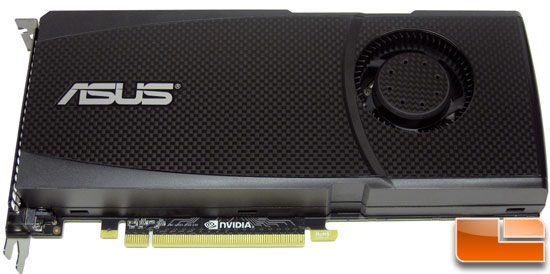
The ASUS GeForce GTX 470 graphics card that we have on the test bench
today is a dual-slot single GPU video card that measures in at 9.5″ in
length. The GeForce GTX 470 is
one inch shorter than the GeForce GTX 480, so it should be able to fit
in more cases and be easier to route wires around for those looking for a clean system build. The ASUS GeForce GTX 470 graphics card (ENGTX470) features reference clock speeds of 607MHz core clock and 837MHz on the 1280MB of GDDR5 memory that runs on a 320-bit memory interface.
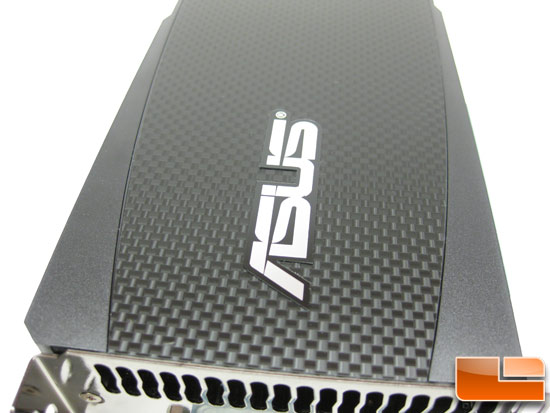
The front of the ENGTX470 is pretty plain, but features a very nice looking carbon
fiber sticker that looks sharp in our opinion. How can you go wrong with a black plastic fan housing with the black carbon fiber sticker?
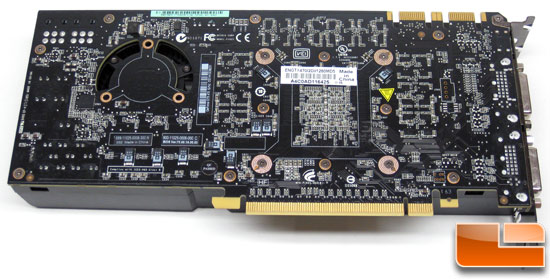
Flipping the ASUS GeForce GTX 470 video card over we don’t find too many interesting
things, but we can make out two small holes. These allow for a small amount
of extra airflow into the video cards cooling fan, which helps improve
cooling performance. We have seen this for a couple years now on several
NVIDIA graphics cards and it appears to work well. The GeForce GTX 470 graphics cards does support SLI and has a
pair of SLI bridges located along the top edge of the graphics card. The
NVIDIA GTX 400 series support two, three, and quad SLI configurations.
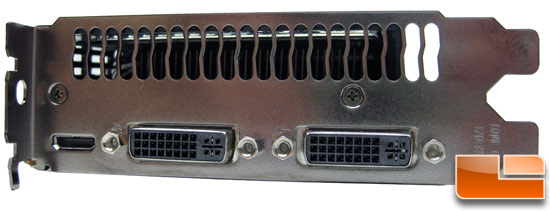
The ASUS GeForce GTX 470 GDDR5 graphics card has a pair of
dual-link DVI-I outputs along with a mini-HDMI output header. The GeForce GTX 400 series of graphics cards are the first that we have seen with this connector. ASUS does not including an adapter with their bundle, but they do include a DVI-to-HDMI adapter. Both the Dual-link DVI and HDMI outputs can be
used to send high-definition video to an HDTV via single cable (including audio if running HDMI). A regular sized HDMI header was not used since it
couldn’t fit next to the pair of DVI outputs.
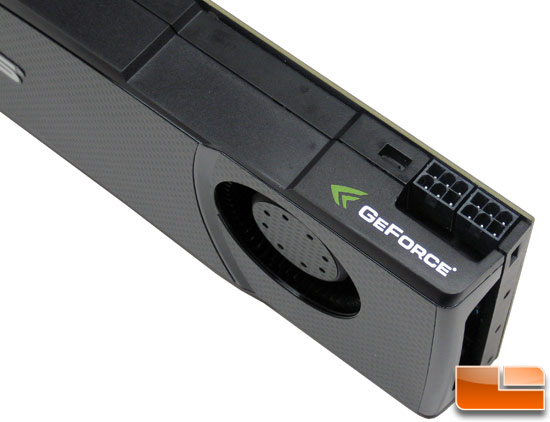
The ASUS GeForce GTX 470 video card requires a 550 Watt or greater
power supply to power the GeForce GTX 470 as it has a max board power
(TDP) of 215 Watts. NVIDIA also suggests that your power supply have a
minimum of 38Amps on the +12V rail. It also requires that the power
supply has two 6-pin PCI Express power connectors for proper connection. It should be noted that
the NVIDIA minimum system power requirement based is based on a PC
configured with an Intel Core i7 3.2GHz CPU. For comparison sake the GeForce GTX 480 video card needs a
minimum 600W or greater system power supply (with a minimum 12V current
rating of 42A) in case you are wondering what the big brother for
this card requires.
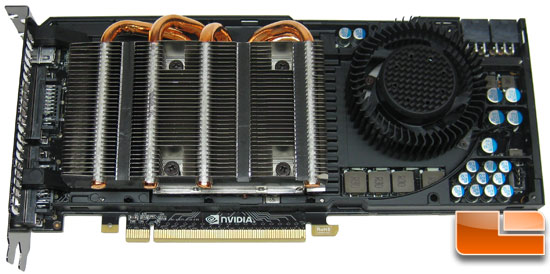
Since the GeForce GTX 400 series run rather hot it was noted to us that
SLI requires optimal cooling and airflow. Poor ventilation will result
in high fan speeds.
For SLI use, NVIDIA strongly recommends that you test in a well
ventilated case (rather
than an open bench). If three PCI-E slots are available, the cards
should be installed in
the inner most and outer most slots. This ensures optimal cooling for
the GPUs. NVIDIA said that 4-way SLI (Quad SLI) support for GTX480 will
be supported in specific motherboards (same as GTX 285). AS you can see from the photo above, the heat sink used on the GTX470 is quite large and features five copper heat pipes.
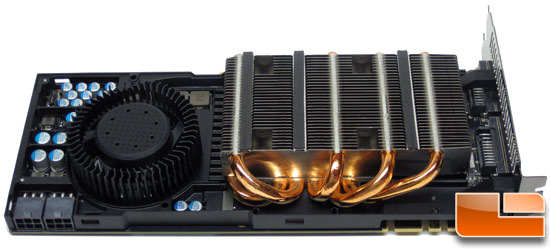
Looking at the ASUS ENGTX470 from the top you can better make out the five cooper heat pipes that help keep the 448 CUDA cores cool during use.

Comments are closed.